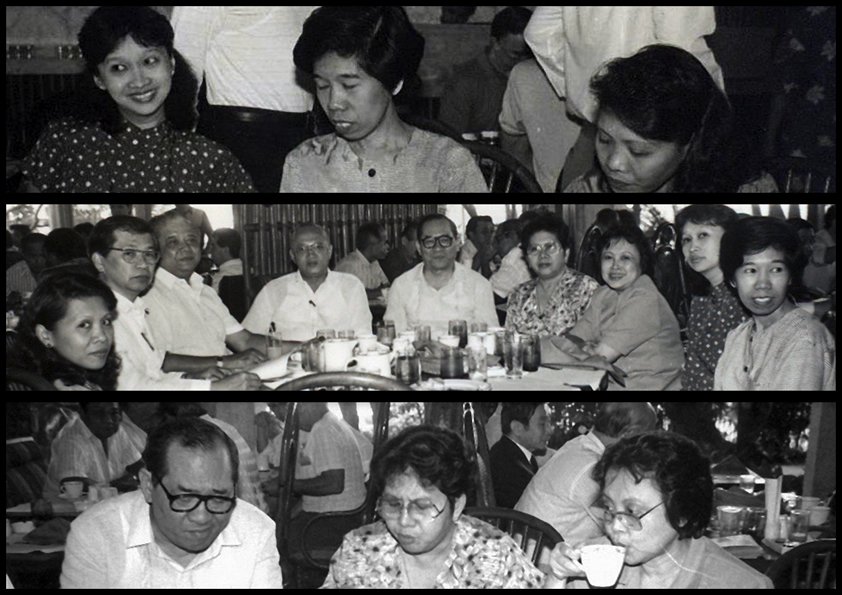
Florence Rochelle Gan, MD, FPCP, FPCEDM
The discovery of sodium-glucose cotransporter-2 inhibitors (SGLT2i) is a major turning point in the management of diabetes mellitus, with high quality evidence proving its benefit to reduce major cardiovascular events, heart failure hospitalizations, renal disease progression and all-cause mortality. However, SGLT2i may increase the risk for euglycemic diabetic ketoacidosis (EDKA) or DKA with lower-than-anticipated glucose levels. The clinical triad is composed of high anion gap metabolic acidosis, ketonemia and blood glucose <250 mg/dL.1
Epidemiology. EDKA is an acute, life-threatening condition that may occur in type 1 diabetes (T1D) and type 2 diabetes (T2D). The incidence of SGLT2i associated DKA in T1D and T2D is 6% 1,2,3 and 0.1-0.6%,2 respectively. In a multicenter study, the incidence of EDKA among SGLT2i users, including Southeast Asians and Filipinos, is 0.25%.4 While SGLT2i is highly recommended in T2D, it is not approved by the US FDA for T1D due to the higher incidence of DKA among T1D. Meanwhile, the European Medicines Agency has approved low dose SGLT2i dapagliflozin and dual inhibitor of SGLT1 and SGLT2 sotagliflozin, for T1D with BMI ≥27 kg/m2 as adjunct therapy to insulin.5
Pathophysiology. SGLT2i reduces plasma glucose concentration in an insulin-independent mechanism by inhibiting proximal tubular reabsorption of filtered glucose. In T1D, insulin reduction to avoid hypoglycemia during SGLT2i initiation can promote lipolysis and ketogenesis. In T2D, glucosuria leads to increased preproglucagon gene expression leading to a rise in pancreatic α‐cell glucagon levels. The increased glucagon/insulin ratio stimulates lipolysis and hepatic ketogenesis. Moreover, SGLT2i may also decrease renal clearance of ketones, leading to metabolic acidosis. 6,7
Precipitating Factors. Albeit the incidence of DKA in T2D is low, it is important to decipher patient profiles and clinical scenarios that can trigger EDKA. The two primary precipitating factors are carbohydrate deficit and metabolic stressful events. Glucosuria, together with dietary changes (ketogenic diet (KD), very low carbohydrate diet (VLCD), pre/post-operative fasting, alcohol consumption), lead to carbohydrate deficit states and hypovolemia, which promote glucagon release and trigger ketone production in euglycemia.7 Likewise, stressful states such as acute illness (infection, stroke, myocardial infarction, trauma) and prolonged exercise bring about a rise in counterregulatory hormones leading to proteolysis, lipolysis and ketogenesis.7
Diagnosis. The interval from SGLT2i initiation and onset of DKA varies from 0.3 to 420 days.8 Patients present with classic signs and symptoms of DKA such as nausea, vomiting, abdominal pain, shortness of breath, loss of appetite and fatigue. On physical exam, patients appear dehydrated and tachycardic. Laboratory parameters include euglycemia (<250 mg/dL),1,9 metabolic acidosis (pH <7.30, bicarbonate <18 mEq/L), and ketonemia.10 Given the euglycemic state, the diagnosis can be masked and missed; hence, a high index of suspicion is warranted.
Treatment. Management of EDKA is quite similar to hyperglycemic DKA.9 Initial fluid resuscitation, insulin infusion to correct the ketosis in conjunction with IV dextrose to avoid hypoglycemia and potassium supplementation are still the cornerstones of treatment. Frequent patient monitoring and treatment of precipitating factors are essential. Resolution is characterized by pH >7.30, anion gap <12 mmol/L, and serum bicarbonate ≥15 mEq/L. Case reports describe EDKA’s longer resolution time of up to 92 hours compared to hyperglycemic DKA of 35 hours due to prolonged acidosis.11
Prevention. Insulin discontinuation or excessive insulin dose reduction are not advised on SGLT2i initiation.1 Patients taking SGLT2i should be informed about DKA. Sick day and exercise protocols should be discussed thoroughly. SGLT2i users should avoid excess alcohol intake, VLCD or KD. In the setting of a surgical procedure, SGLT2i should be withheld 3 days prior or immediately in case of emergency surgery, but adjustment in the diabetes regimen should be provided. The half-life of a single dose of SGLT2i varies between 8 – 16 hours;7 hence, glucosuria can persist after drug withdrawal.
Conclusion. Whereas SGLT2i can increase the risk of EDKA, the incidence is low. The risk-benefit ratio still favors SGLT2i use. Since SGLT2i associated DKA present atypically, vigilance in diagnosing EDKA can reduce the treatment delay and improve patient outcome.
References:
- Handelsman Y, et al . AACE/ACE Position Statement on the Association of SGLT-2 Inhibitors and Diabetic Ketoacidosis. Endocrine Practice. 2016. 22(6), 753762. doi:10.4158/ep161292.ps
- Davies MJ, et al. Management of Hyperglycemia in Type 2 Diabetes, 2022. A Consensus Report by the American Diabetes Association (ADA) and the European Association for the Study of Diabetes (EASD). Diabetes Care 2022; dci220034. https:// doi.org/10.2337/dci22-0034
- Henry RR, Thakkar P, Tong C, Polidori D, Alba M. Efficacy and Safety of Canagliflozin, a Sodium-Glucose Cotransporter 2 Inhibitor, as Add-on to Insulin in Patients With Type 1 Diabetes. Diabetes Care. 2015 Dec;38(12):2258-65. doi: 10.2337/ dc15-1730. Epub 2015 Oct 20. PMID: 26486192.
- Ata F, Yousaf Z, Khan AA, Razok A, Akram J, Ali EAH, Abdalhadi A, Ibrahim DA, Al Mohanadi DHSH, Danjuma MI. SGLT-2 inhibitors associated euglycemic and hyperglycemic DKA in a multicentric cohort. Sci Rep. 2021 May 13;11(1):10293. doi: 10.1038/s41598-021-89752-w. PMID: 33986421; PMCID: PMC8119406.
- Holt RIG, et al; The Management of Type 1 Diabetes in Adults. A Consensus Report by the American Diabetes Association (ADA) and the European Association for the Study of Diabetes (EASD). Diabetes Care 1 November 2021; 44 (11): 2589– 2625. https://doi.org/10.2337/dci21-0043
- Taylor SI, Blau JE, Rother KI. SGLT2 Inhibitors May Predispose to Ketoacidosis. J Clin Endocrinol Metab. 2015 Aug;100(8):2849-52. doi: 10.1210/jc.2015-1884. Epub 2015 Jun 18. PMID: 26086329; PMCID: PMC4525004.
- Somagutta M R, Agadi K, Hange N, et al. Euglycemic Diabetic Ketoacidosis and Sodium-Glucose Cotransporter-2 Inhibitors: A Focused Review of Pathophysiology, Risk Factors, and Triggers. 2021. March 3. Cureus 13(3): e13665. DOI 10.7759/ cureus.13665
- Mistry S, Eschler DC. Euglycemic Diabetic Ketoacidosis Caused by SGLT2 Inhibitors and a Ketogenic Diet: A Case Series and Review of Literature. AACE Clin Case Rep. 2020 Dec 28;7(1):17-19. doi: 10.1016/j.aace.2020.11.009. PMID: 33851013; PMCID: PMC7924151.
- Kitabchi AE, Umpierrez GE, Miles JM, Fisher JN. Hyperglycemic crises in adult patients with diabetes. Diabetes Care. 2009 Jul;32(7):1335-43. doi: 10.2337/dc09-9032. PMID: 19564476; PMCID: PMC2699725.
- Long B, Lentz S, Koyfman A, Gottlieb M. Euglycemic diabetic ketoacidosis: Etiologies, evaluation, and management. Am J Emerg Med. 2021 Jun;44:157-160. doi: 10.1016/j.ajem.2021.02.015. Epub 2021 Feb 16. PMID: 33626481.
- Rafey MF, Butt A, Coffey B, Reddington L, Devitt A, Lappin D, Finucane FM. Prolonged acidosis is a feature of SGLT2i-induced euglycaemic diabetic ketoacidosis. Endocrinol Diabetes Metab Case Rep. 2019 Sep 27;2019:19-0087. doi: 10.1530/ EDM-19-0087. Epub ahead of print. PMID: 31600728; PMCID: PMC6765316.



